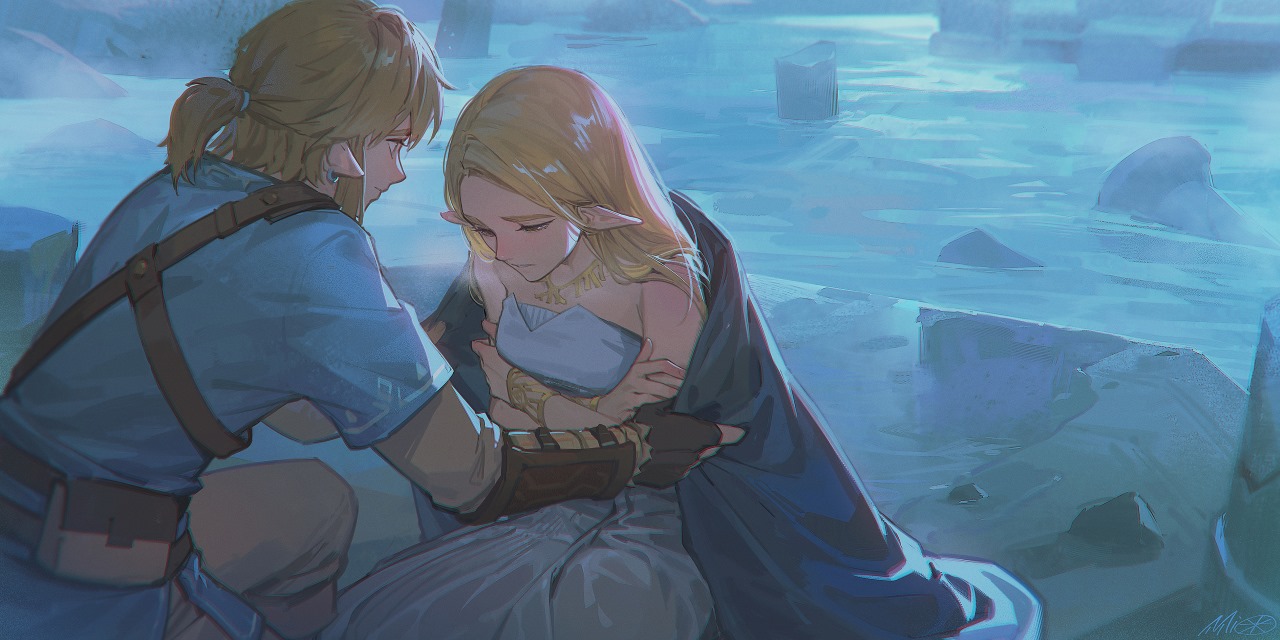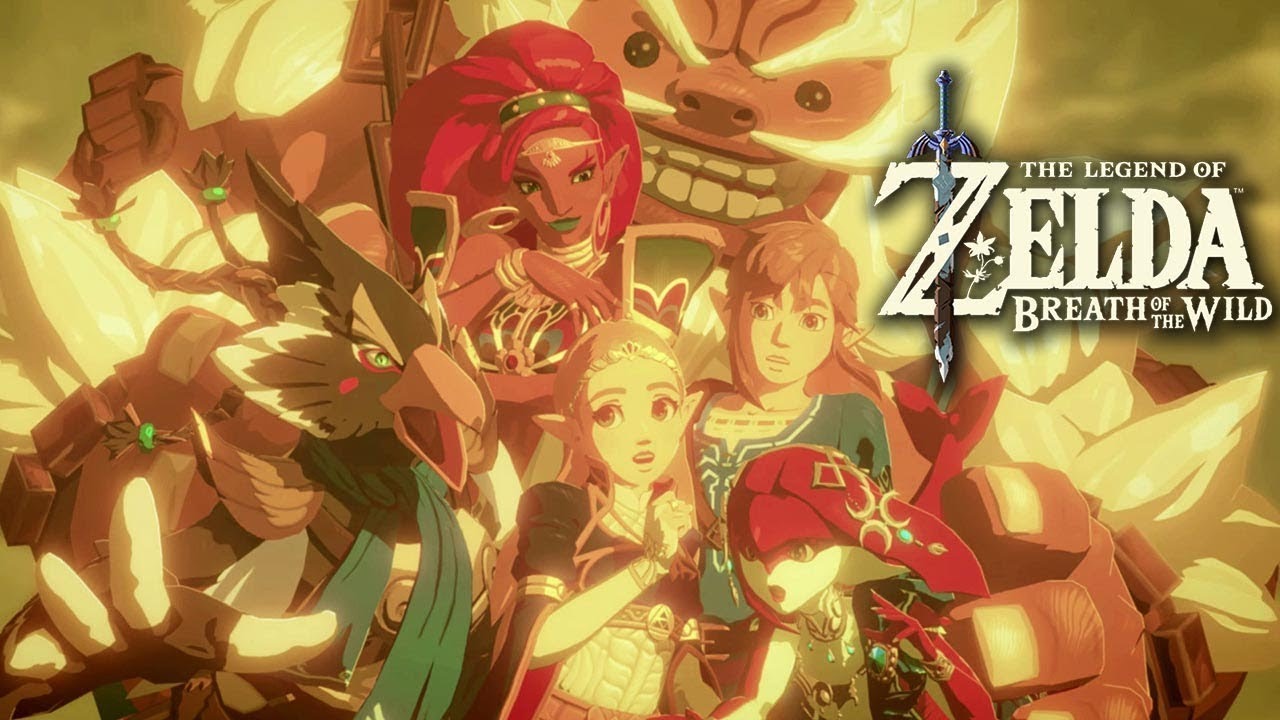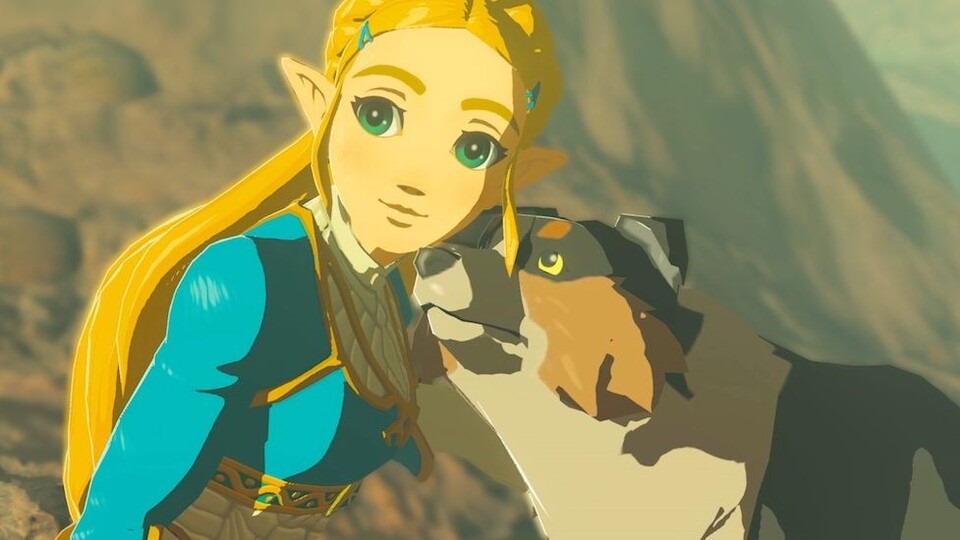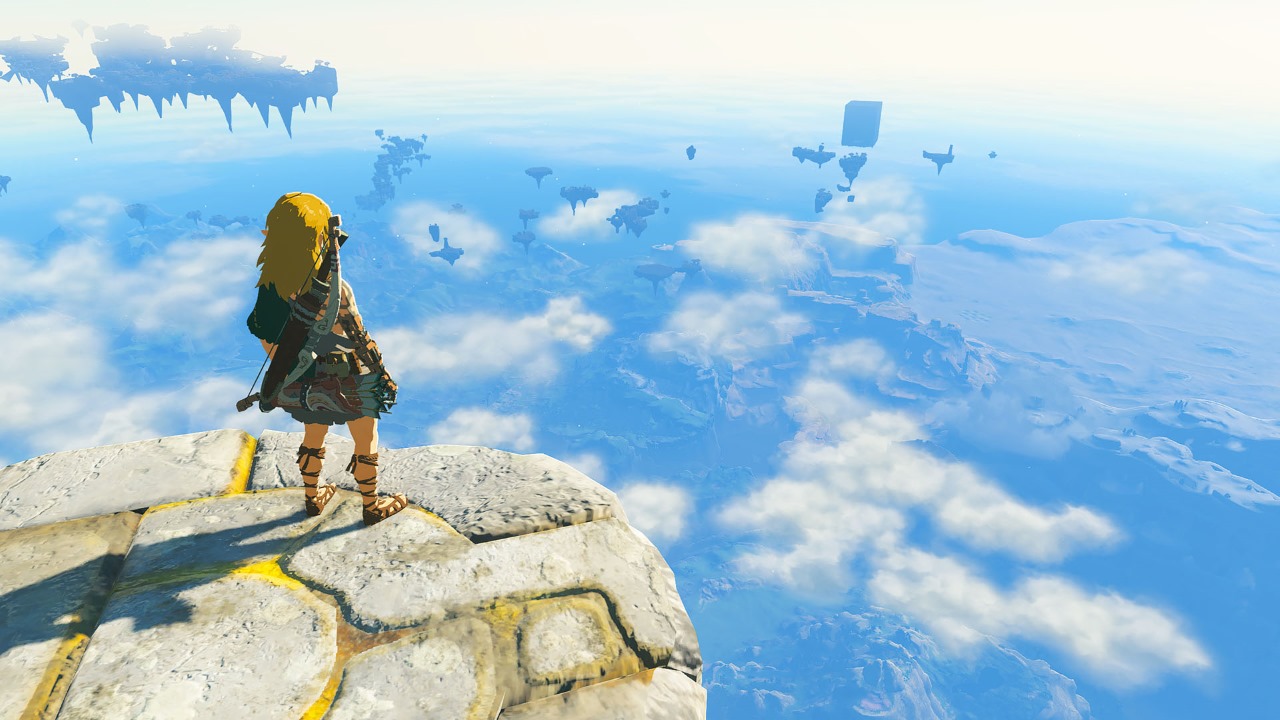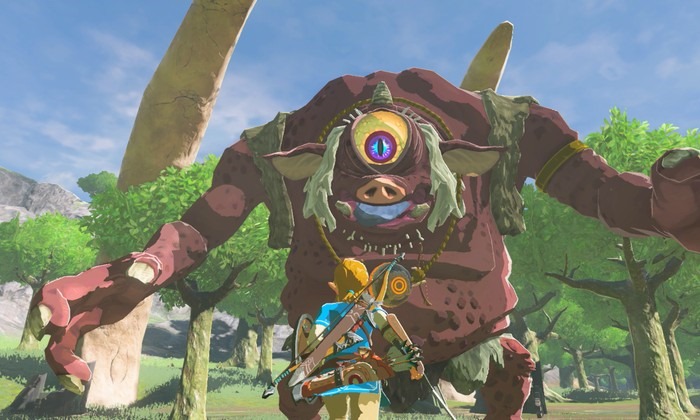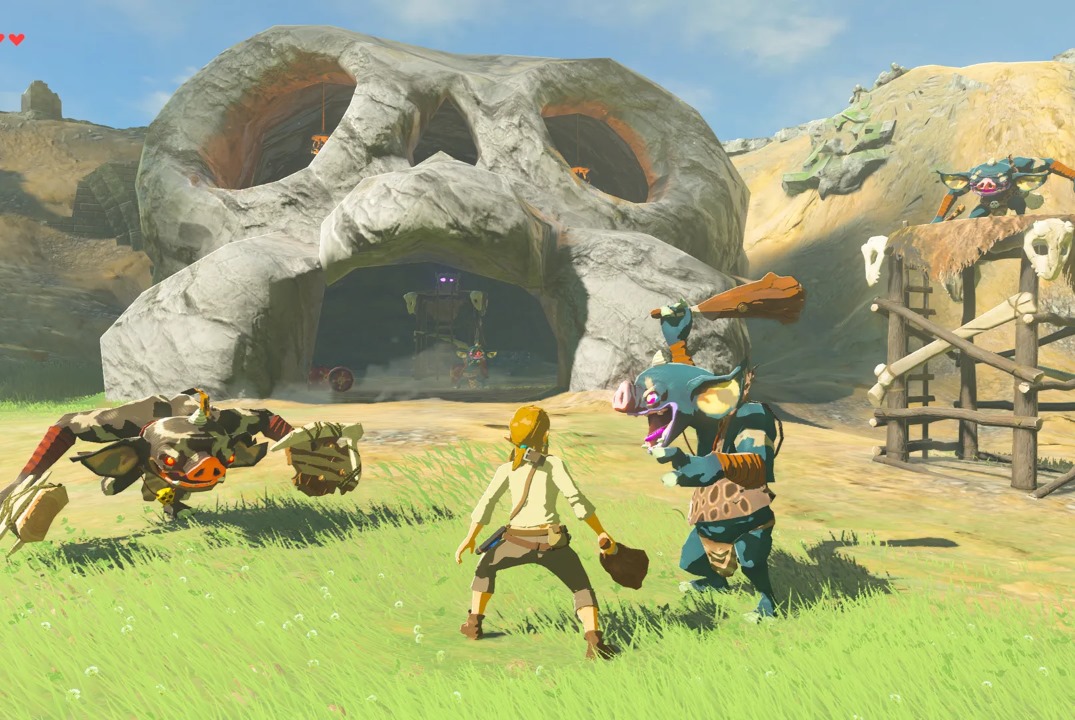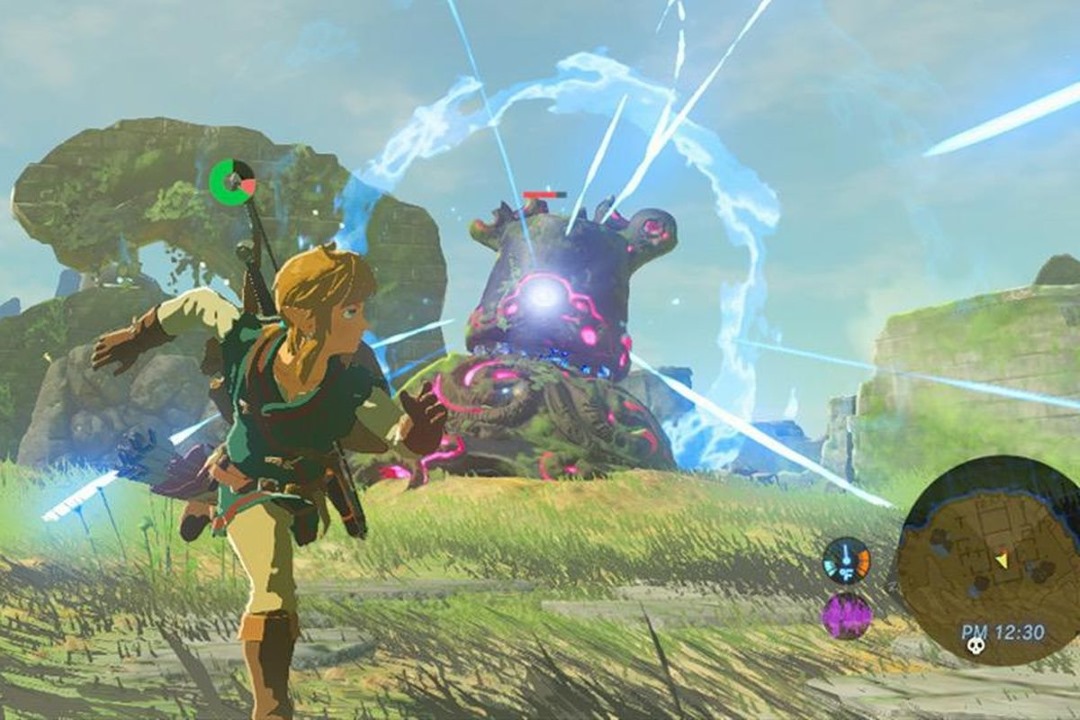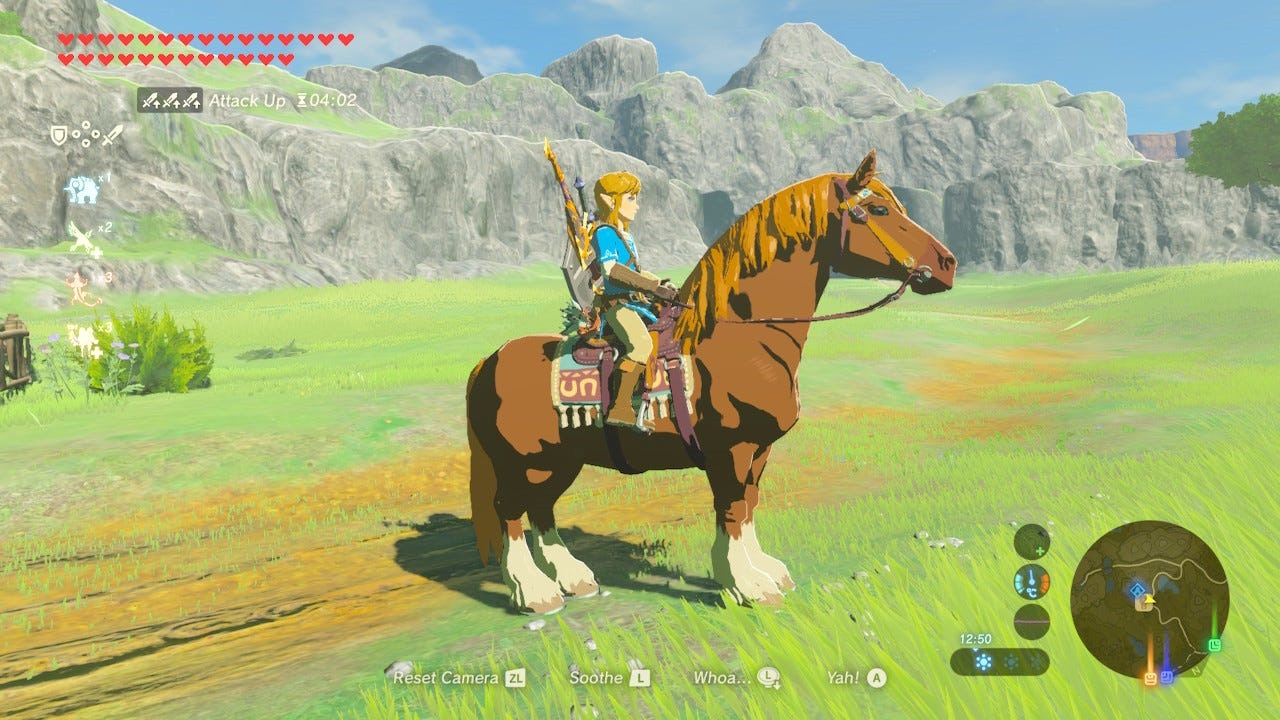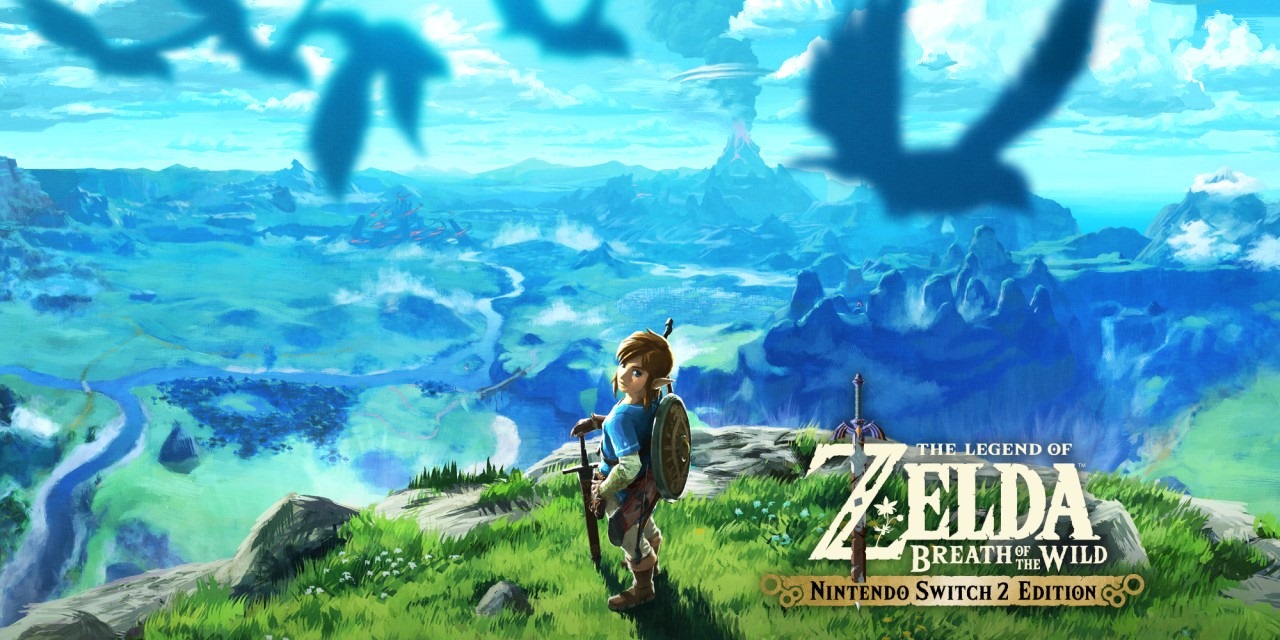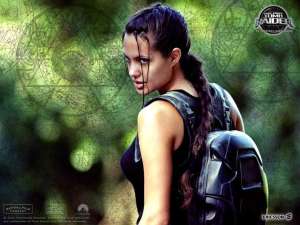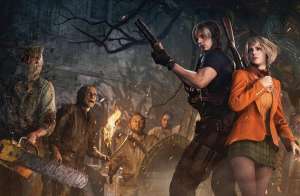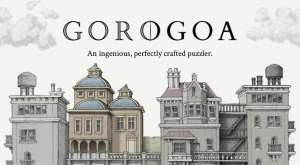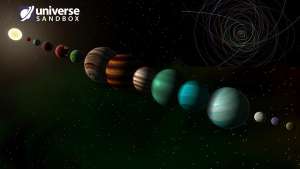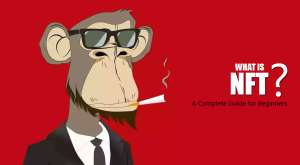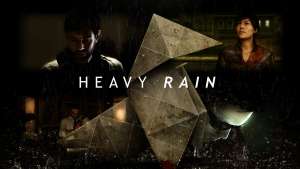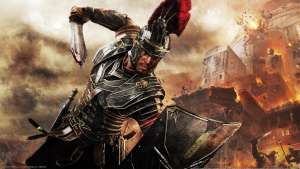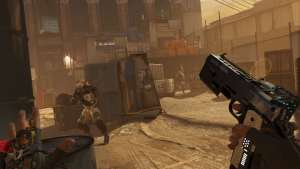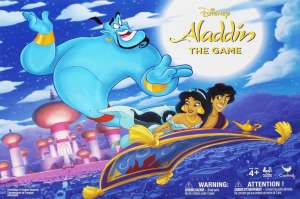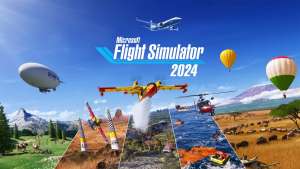When The Legend of Zelda: Breath of the Wild launched in March 2017, it didn’t just arrive—it cracked the foundations of what we thought open-world games could be. At the same time that the Nintendo Switch was making its debut, this game carried the weight of both reviving a legendary franchise and proving the power of a brand-new console. No small task, yet it did more than deliver. It redefined the design philosophy of Zelda games, reinvented open-world freedom, and managed to feel both wildly new and deeply familiar.
Unlike its more linear predecessors, this Zelda entry let go of boundaries—literally. From the moment Link stepped out of the Shrine of Resurrection and stood on that iconic cliffside vista overlooking Hyrule, it was clear: the rules had changed. No longer bound by carefully gated dungeons or predetermined quest orders, players were free to climb, glide, fight, and solve in whatever way their minds could conceive. And that sense of freedom wasn’t an illusion. It was backed by one of the most responsive and flexible game engines Nintendo had ever built—an engine where fire spread naturally, metal conducted electricity, and gravity could be used as a weapon.
But what makes Breath of the Wild so exceptional isn’t just its design choices—it’s how seamlessly they tie into the narrative, the world, and the experience of becoming the hero not through exposition, but through action and discovery. This is not just a game you play—it’s a kingdom you learn to understand, master, and eventually heal. 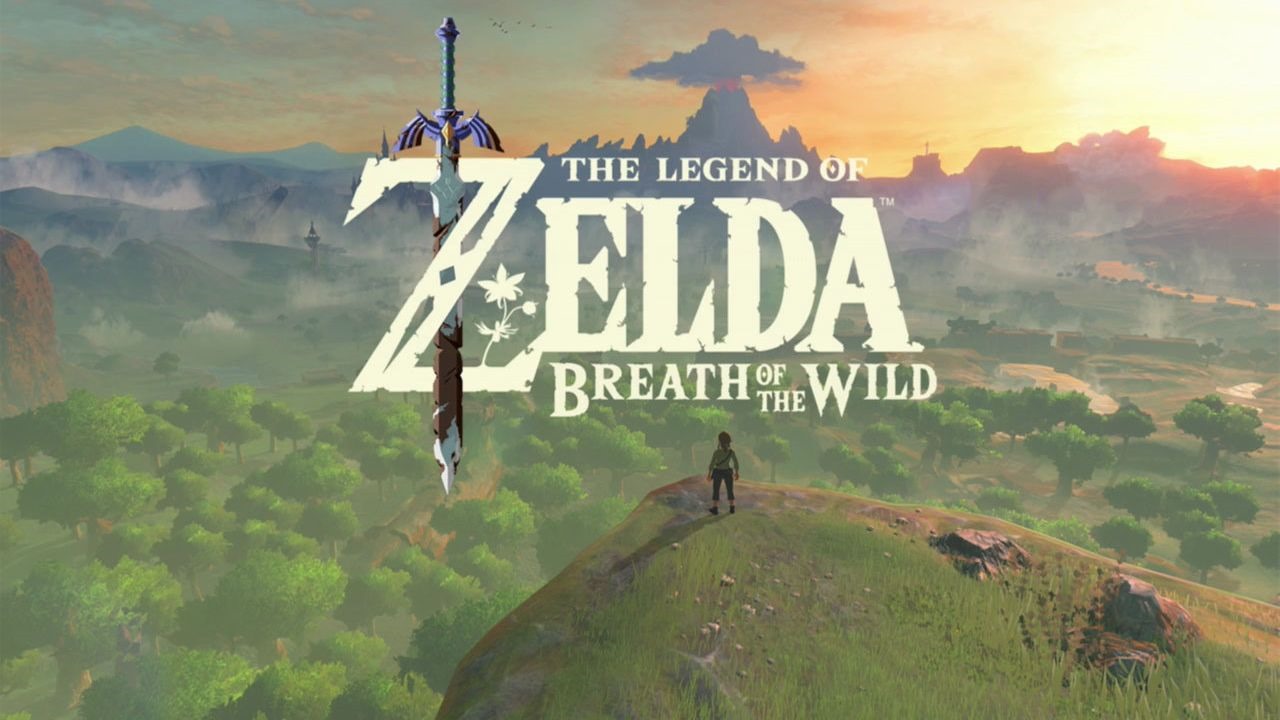
Gameplay Mechanics: Relearning the Art of Survival
Mechanically, Breath of the Wild is a masterclass in minimalist complexity. Every system is deceptively simple, yet layered in such a way that every interaction feels meaningful and reactive. The game doesn’t handhold you through tutorials or walls of text. It lets you experiment, fail, and learn. And in doing so, it returns a sense of personal accomplishment often lost in the quest-marker-saturated worlds of other open-world games.
Weapons are plentiful but fragile, forcing players to adapt constantly. That design decision angered some at first—how dare your treasured knight's broadsword shatter mid-combat? But over time, that impermanence teaches players to let go of attachment and lean into experimentation. Try a tree branch. Toss a bomb barrel. Freeze enemies with ice arrows and smash them with a metal box launched via stasis. These aren’t gimmicks—they're part of the toolkit for survival.
The weather is a factor, too. Rain makes climbing cliffs near impossible, thunderstorms punish you for wearing metal, and cold regions demand warm clothing or spicy meals. The survival elements are never overwhelming, but they force you to engage with the environment. There’s no autopilot here. If you want to climb a tower in the rain, you might just have to wait, or find another path. That kind of design subtly teaches patience, creativity, and spatial awareness.
Combat is loose but strategic. Enemies have attack patterns but behave unpredictably enough to keep you guessing. A well-timed parry can turn the tide of battle, while stealth attacks let you bypass larger encounters. It’s not Souls-like, but it rewards awareness and timing. Combined with elemental effects—fire, electricity, ice—and physics-based interactions, every battle becomes an improvisational puzzle.
Exploration: A World That Beckons Without Words
No game nails the thrill of discovery like Breath of the Wild. There’s no checklist telling you where to go next, no flashing icons demanding your attention. It’s a world where your own curiosity is the map. If something looks interesting—a ruined tower, a distant glow, a weird rock formation—you go there. And nine times out of ten, there’s something worth finding.
Shrines dot the landscape like bite-sized dungeons. Each one offers a unique challenge, whether it’s a logic puzzle, a physics conundrum, or a combat trial. Completing them earns Spirit Orbs, which you can trade for more stamina or hearts. More importantly, they act as fast-travel points, encouraging exploration while rewarding it.
There’s a rhythm to exploration that feels deeply satisfying. You might set out to climb a mountain and find a Korok seed along the way. Then you spot a dragon flying overhead, chase it, fall into a hidden valley, find a side quest, discover a shrine, and end up two hours later wondering what happened to your original goal. That’s the magic. The world constantly surprises you. It doesn’t feel like it’s built from copy-paste assets or artificial barriers. It feels organic—lived-in, ancient, and layered with quiet stories waiting to be uncovered.
And visually, despite the Switch’s limitations, the art direction makes it sing. The watercolor-inspired cel shading, the naturalistic lighting, the subtle particle effects—they all contribute to a Hyrule that feels as serene as it is dangerous. The wind rippling through grass, the way snow clings to your boots, the sudden downpour that soaks the earth—these moments are not just visual polish. They are storytelling without words.
Narrative Depth: Memory, Loss, and the Weight of Silence
Unlike previous Zelda games that often relied on linear storytelling, Breath of the Wild offers its narrative in fragments. Link awakens a century after a cataclysmic battle with Calamity Ganon. His memory gone, his allies fallen, and the kingdom in ruins. The story isn’t fed to you—it’s recovered. Through lost memories scattered across Hyrule, you piece together what happened before the fall.
This approach gives the story emotional weight. Every flashback feels earned. You see Zelda not as a distant royal or a damsel in distress, but as a complex, conflicted person. Her burden isn’t just about sealing Ganon—it’s about living up to an impossible legacy, confronting failure, and finding strength in unexpected ways. Her arc is one of the most powerful in the franchise, and it’s told with restraint and elegance.
The Champions—Mipha, Daruk, Urbosa, and Revali—each have their own backstories, motivations, and relationships with Link. Though their presence is largely posthumous, the game gives them life through flashbacks and divine beast segments. Their personalities shine through, and regaining control of their divine beasts becomes a deeply personal act—not just mechanically useful, but emotionally resonant.
Calamity Ganon, as a force, is more thematic than character-driven. He represents entropy—a seeping corruption that has swallowed Hyrule. The final confrontation isn’t about vengeance. It’s about closure. Restoring peace. Ending the cycle.
And that’s what the game is about at its core—not saving the princess, but restoring balance. Rebuilding what's been lost. Not just through battle, but through small acts—helping villagers, lighting torches, finding someone’s lost horse. The quiet heroism of everyday actions.
Development Insights: Reinventing Zelda from the Ground Up
It’s hard to overstate the gamble Nintendo took with Breath of the Wild. After decades of established formulas—go to dungeon, get item, beat boss—the developers decided to start over. Director Hidemaro Fujibayashi and producer Eiji Aonuma led the charge to deconstruct what Zelda meant and rebuild it around the idea of “open-air gameplay.”
The result wasn’t just a shift in design, but a philosophical rethinking of what freedom in games should feel like. No objective markers, no railroading, just systems designed to encourage curiosity. That meant building an engine capable of handling complex physics, weather interactions, and emergent gameplay. It wasn’t always smooth—durability and performance issues were real—but the vision never wavered.
The team also studied real-world survival techniques, consulted with outdoor experts, and tested hundreds of puzzle mechanics. The goal wasn’t realism—it was coherence. They wanted the world to make sense on its own terms, and they succeeded.
Even the sound design reflects that ethos. The minimalistic piano score doesn’t overpower—it reacts to what you do. Soft notes as you explore. Tense strings during battle. A crescendo when you reach a mountaintop. It creates a connection that goes beyond spectacle. It becomes personal.
And this attention to design carries through every facet of the game, from the UI’s clean, diegetic maps to the way NPCs comment on weather or your outfit. Nothing is wasted. Nothing is arbitrary.
Game Versions and Editions: From Standard to Switch 2
At launch, Breath of the Wild was available on both the Nintendo Switch and the aging Wii U. The Switch version offered slightly better performance and visuals, but otherwise, both were identical. Over time, however, Nintendo released several special editions to appeal to collectors and fans.
The Master Edition included a Master Sword statue, soundtrack CD, and Sheikah Slate case. The Special Edition came with fewer goodies but retained the core extras. For newer players, the Explorer’s Edition bundled a physical guidebook and map—great for those overwhelmed by the game’s freedom.
Most recently, the game has been optimized for Nintendo Switch 2. This version is not a remake or sequel—it’s a refined, technically enhanced edition that runs at higher resolutions, smoother framerates, and includes HDR support. It also integrates a new “Zelda Notes” feature, allowing deeper exploration of lore and gameplay tips. However, it doesn’t include the DLC by default—you’ll need to buy the Expansion Pass separately.
These editions show Nintendo’s continued support for the title and its commitment to maintaining Breath of the Wild as a pillar of the Zelda universe—even as new entries like Tears of the Kingdom push the series forward.
Downloadable Content and Expansions: More Than Just Bonus Content
When the Expansion Pass for Breath of the Wild was first announced, many were skeptical. Would this be a shallow content drop, or something meaningful? Fortunately, what Nintendo delivered was a substantial extension of the experience—one that deepened mechanics, expanded the narrative, and provided hardcore fans with new layers to explore.
The first DLC pack, The Master Trials, offered more than difficulty spikes. It challenged players to their core with the Trial of the Sword—a combat gauntlet where Link must face waves of enemies without any gear. Stripped down to bare essentials, it was the ultimate test of your mastery of the game's mechanics. Completing it rewarded players with the Master Sword's full power, permanently glowing and ready for battle.
It also introduced Hero’s Path Mode, a hauntingly brilliant feature that lets you view a trail of your past 200 hours of gameplay—highlighting just how much of the world you had or hadn’t explored. Even seasoned players found they had missed entire regions or shrine clusters. Additionally, Master Mode introduced tougher enemy types, floating platforms, and enemy health regeneration, perfect for those craving higher stakes.
The second DLC, The Champions’ Ballad, went further. It added a new divine beast dungeon, more story cutscenes for each Champion, and perhaps most surprisingly, the Master Cycle Zero—a Sheikah technology motorcycle that feels as strange as it is exhilarating. While some fans debated whether a bike belonged in Zelda lore, its inclusion was undeniably fun, and the lore surrounding its creation gave it a fitting context.
These expansions weren’t afterthoughts. They respected players' time, offered high replayability, and added emotional weight to Link’s journey. They also proved that even in a game already brimming with content, there was still room to grow.
Reception and Legacy: A Blueprint for the Future of Open Worlds
The critical and commercial success of Breath of the Wild was nothing short of staggering. Within its first year, it sold over 10 million copies across Wii U and Switch, eventually surpassing 30 million—making it the best-selling Zelda game of all time. But the numbers, while impressive, only tell part of the story.
At The Game Awards 2017, it took home the biggest prize: Game of the Year. It also won Best Game Direction and Best Action/Adventure Game, cementing its place among gaming’s modern masterpieces. Major outlets hailed it as a reinvention not just of Zelda, but of the open-world genre itself. For many critics, it wasn’t just the best game of the year—it was among the greatest ever made.
What makes its legacy so powerful is its influence. In the years following its release, countless games—both indie and AAA—borrowed its design ethos. Games like Genshin Impact, Immortals Fenyx Rising, and even Elden Ring echoed its exploration freedom, environmental puzzles, and survival systems. It shifted industry expectations toward player-led discovery and intuitive world design.
Yet Breath of the Wild is also a deeply personal game for many. Ask any fan, and they’ll recall their first lightning strike death, their discovery of a hidden Korok, the time they shield-surfed off a mountain into a Lynel’s lair. It created memories not through scripted moments, but through emergent gameplay—moments that happened uniquely to each player.
It is now widely considered Nintendo’s magnum opus in 3D game design. And it’s not just nostalgia or hype—it’s the evidence of a game that continues to feel alive years later.
Future Prospects and the Rise of a New Era
While Tears of the Kingdom now carries the torch, Breath of the Wild hasn’t been left in the shadows. Its mechanics, lore, and world structure laid the foundation for everything that followed. The Switch 2 Edition ensures that it remains accessible, playable, and beautiful on new hardware—breathing continued life into an already rich experience.
And its success reshaped how Nintendo approaches its franchises. We’re likely to see its design principles carry over to future Zelda entries, and possibly influence other IPs like Metroid or even Mario. There’s also speculation around a potential Breath of the Wild anime adaptation—something that wouldn’t have seemed possible before its meteoric popularity.
What’s most exciting is that Breath of the Wild didn’t just redefine its own series. It redefined player expectations. After exploring its version of Hyrule, going back to conventional open worlds feels a bit… lifeless. And that’s the mark of a truly great game—not just creating a world, but setting a new bar for what those worlds can be.
Game Details
-
Game Title: The Legend of Zelda: Breath of the Wild
-
Genre: Action-Adventure, Open World
-
Release Year: 2017 (Wii U and Nintendo Switch), 2025 (Nintendo Switch 2 Edition)
-
Platforms: Wii U, Nintendo Switch, Nintendo Switch 2
-
Age Rating: ESRB E10+ (Everyone 10 and up)
-
Player Modes: Single Player
-
Game Mode Accessibility: Fully Offline
-
Pricing Model: Paid – $59.99 (Standard), $69.99 (Switch 2 Edition), DLC Expansion Pass $19.99
-
Game Developer: Nintendo EPD
-
Game Publisher: Nintendo
-
Game Engine: Proprietary Nintendo Engine
-
Awards and Nominations:
-
Game of the Year – The Game Awards 2017 (Winner)
-
Best Game Direction – The Game Awards 2017 (Winner)
-
Best Action/Adventure Game – The Game Awards 2017 (Winner)
-
Game of the Year – BAFTA 2018 (Nominee)
-
Innovation in Game Design – Game Developers Choice Awards (Winner)
-
Dozens of “Best of the Decade” awards from major outlets
-
Pros and Cons
Pros:
-
Revolutionary open-world design that respects player intelligence
-
Rich, organic exploration with environmental interactivity
-
Emotionally resonant story delivered through gameplay, not cutscenes
-
Masterful use of sound and minimalist soundtrack
-
Immense replayability even years after release
Cons:
-
Weapon durability remains divisive
-
Less traditional dungeons compared to older Zelda titles
-
Occasional frame drops, especially in dense regions
-
Sparse voice acting may not appeal to all
Is It Worth Playing?
If there is one game that deserves to be experienced at least once by anyone who claims to love video games, it's The Legend of Zelda: Breath of the Wild. This isn’t just nostalgia or fan service—it’s craftsmanship. The game doesn’t rely on microtransactions, cinematic cutscenes, or endless tutorials. It trusts the player. It empowers them.
The beauty of Breath of the Wild is that it doesn’t insist on how you should play. You can spend hours cooking, paragliding, or just chasing storms. You can challenge yourself with minimal gear or overprepare for every boss fight. It’s not about conquering the game—it’s about discovering how you want to exist in it.
And even now, in 2025, its design holds up. Especially with the Nintendo Switch 2 enhancements, there’s no better time to revisit—or discover—Hyrule’s fallen kingdom. Tears of the Kingdom may be the newer entry, but Breath of the Wild remains the beating heart of Zelda’s modern era.
Our Rating
-
Gameplay: 9.5 / 10
-
Graphics: 9 / 10
-
Story and Characters: 8.8 / 10
-
Exploration and World Design: 10 / 10
-
Sound and Music: 9.2 / 10
-
Replay Value: 9 / 10
-
Overall Score: 9.3 / 10
System Requirements (For PC Emulation via Cemu)
Minimum:
-
OS: Windows 7 64-bit
-
CPU: Intel Core i5-2400 / AMD FX-8320
-
RAM: 8 GB
-
GPU: NVIDIA GTX 660 / AMD Radeon HD 7870
-
Storage: 25 GB
Recommended:
-
OS: Windows 10/11 64-bit
-
CPU: Intel Core i7-6700K / AMD Ryzen 5 1600
-
RAM: 16 GB
-
GPU: NVIDIA GTX 1070 / AMD RX 580 or better
-
Storage: SSD with 25 GB free
(Note: These are estimates based on Cemu emulator compatibility, as there is no official PC port.)
If you ever find yourself wandering through digital landscapes, Breath of the Wild is the rare game that rewards you not just with loot, but with a real sense of wonder. And in today’s gaming world, that’s more valuable than any sword or shield.

